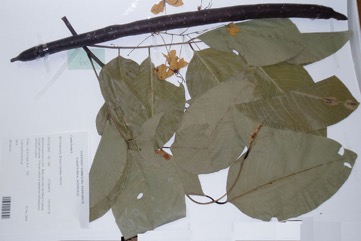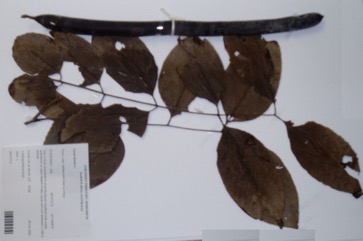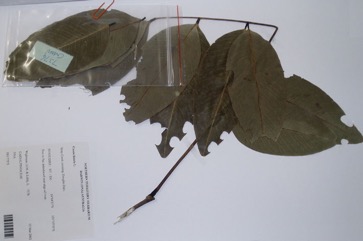Cassia, Golden Shower

A tropical plant. It is native to India. It prefers a rich well drained soil. It needs a protected sunny position. It is drought and frost tender. Plants need a temperature above 16°C for growth. It grows all over India up to 1500 m altitude. It can grow in arid places. In XTBG Yunnan. It suits hardiness zones 10-12.
Also known as:
Ai-kadus, Alash, Ali, Amaltas, Amultas, Anmalthassh, Bahava, Bahawa, Banag, Banar lauri, Bandarlauri, Bangru, Bereska, Bhungadu, Bo-cap nuoc, Cana fistola, Cana pistula, Chaiya-pruek, Dhanbahera, Garmala, Gawkngu, Girimalah, Girmala, Golden rain tree, Golden rain, Guayaba cimarrona, Guolong liang, Honaru, Indian Laburnum, Kakke, Kanikkonna, Ka-zo, Khuun, Kiar, Kirwara, Konnai, Konnei, Koon, Koonna, Lom leng, Mai-lum, Muong hoang yen, Ngu, Ngu-gyi, Ngu-shwe, Ngushwe-ama, Phung-ril, Pohon trangguli, Pudding-pipe tree, Purging Cassia, Pwabet, Rajah kayu, Rajataru, Rajbrikh, Rajbriksh, Rela, Riechpuhs, Sarakkondrai, Shonaru, Sonarkhi pump, Sonalu, Sonaru, Sondali, Sunari, Sundali, Suvarnaka, Trengguli
Synonyms
- Bactyrilobium fistula Willd.
- Cassia bonplandiana DC.
- Cassia excelsa Kunth
- Cassia fistuloides Collad.
- Cassia rhombifolia Roxb.
- Cathartocarpus excelsus G. Don
- Cathartocarpus fistula Pers.
- Cathartocarpus fistuloides (Collad.) G. Don
- Cathartocarpus rhombifolius G. Don
Edible Portion
- Leaves, Flowers, Pod pulp, Fruit, Spice
Where does Cassia grow?
Found in: Africa, Asia, Australia, Bangladesh, Bermuda, Cambodia, Central America, China, Costa Rica, Dominican Republic, East Africa, East Timor, Egypt, Ethiopia, Grenada, Guiana, Guyana, Haiti, Hawaii, Himalayas, India, Indochina, Indonesia, Kenya, Laos, Malawi, Malaysia, Maldives, Marquesas, Mozambique, Myanmar, Nauru, Nepal, Nicaragua, Nigeria, Northeastern India, Pacific, Pakistan, Panama, Papua New Guinea, PNG, Philippines, Rotuma, Sao Tome and Principe, SE Asia, Senegal, Singapore, Sikkim, South America, Sri Lanka, Tanzania, Thailand, Timor-Leste, United States, Vanuatu, Vietnam, West Africa, West Indies, Zimbabwe
Notes: There are 100 Cassia species. This group has been revised to a smaller more consistent group. Also as Caesalpinaceae.
Status: The leaves are eaten in Africa. It is unknown whether they are used in Papua New Guinea.
Growing Cassia, Golden Shower
Cultivation: The plants are grown from seed. The seed need to have the hard seed coat broken. This can be done by boiling them for a few minutes before sowing. It can be cut back and will re-grow.
Edible Uses: The young leaves and flower buds are cooked as a vegetable. The leaves are chopped small before cooking. The flowers are fried. The pulp of the pods is eaten but not the seeds. CAUTION: The pod pulp is a purgative but safe. It is only eaten in small quantities. The pulp is used as an ingredient in spiced Indian tobacco.
Production: It is fairly slow growing. Trees start flowering when 5 years old.
Nutrition Info
per 100g edible portion| Edible Part | Energy (kcal) | Protein (g) | Iron (mg) | Vitamin A (ug) | Vitamin c (mg) | Zinc (mg) | % Water |
|---|---|---|---|---|---|---|---|
| Flowers | - | - | - | - | - | - | |
| Leaves | - | - | - | - | - | - | |
| Pod pulp | - | - | - | - | - | - |
Cassia, Golden Shower Photos



References
Ambasta S.P. (Ed.), 2000, The Useful Plants of India. CSIR India. p 109
Bandyopadhyay, S. et al, 2009, Wild edible plants of Koch Bihar district, West Bengal. Natural Products Radiance 8(1) 64-72
Barwick, M., 2004, Tropical and Subtropical Trees. A Worldwide Encyclopedic Guide. Thames and Hudson p 92
Behera K. K., et al, 2008, Wild Edible Plants of Mayurbhanj District, Orissa, India. J. Econ. Taxon. Bot. Vol. 32 (Suppl.) pp 305-314
Bhogaonkar, P. Y. & Devarkar, V. D., 2018, Inventory for ethnovegetable knowledge of the tribals of Satpura hill area-Melghat, Dist. Amravati (India), Plantae Scientia, 2018; Vol. 01 Issue 01: 01-08
Bodkin, F., 1991, Encyclopedia Botanica. Cornstalk publishing, p 221
Bohra, N., et al, 2017, Ethnobotany of wild edible plants traditionally used by the local people in the Ramnagar regions from Nainital District, Uttarakhand, India. Biolife 5(1): 12-19
Bole, P.V., & Yaghani, Y., 1985, Field Guide to the Common Trees of India. OUP p 57
Brahma, S., et al, 2013, Wild edible fruits of Kokrajhar district of Assam, North-East India, Asian Journal of Plant Science and Research 3(6):95-100
Bremness, L., 1994, Herbs. Collins Eyewitness Handbooks. Harper Collins. p 42
Brickell, C. (Ed.), 1999, The Royal Horticultural Society A-Z Encyclopedia of Garden Plants. Convent Garden Books. p 234
Burkill, H. M., 1985, The useful plants of west tropical Africa, Vol. 3. Kew.
Burkill, I.H., 1966, A Dictionary of the Economic Products of the Malay Peninsula. Ministry of Agriculture and Cooperatives, Kuala Lumpur, Malaysia. Vol 1 (A-H) p 481
Chandrakumar, P., et al, 2015, Ethnobotanical studies of wild edible plants of Gond, Halba and Kawar tribes of Salekasa Taluka, Gondia District, Maharashtra State, India. International Research Journal of Pharmacy 6(8)
Chandrashekara, U. M., 2009, Tree species yielding edible fruit in the coffee-based homegardens of Kerala, India: their diversity, uses and management. Food Sec. 1:361-370
Condit, R., et al, 2011, Trees of Panama and Costa Rica. Princeton Field Guides. p 170
Cowie, I, 2006, A Survey of Flora and vegetation of the proposed Jaco-Tutuala-Lore National Park. Timor-Lests (East Timor) www.territorystories.nt/gov.au p 45
Cribb, A.B. & J.W., 1976, Wild Food in Australia, Fontana. p 82
Cundall, P., (ed.), 2004, Gardening Australia: flora: the gardener's bible. ABC Books. p 337
Dangol, D. R., 2002, Economic uses of forest plant resources in western Chitwan, Nepal. Banko Janakari, 12(2): 56-64
Dangol, D. R. et al, 2017, Wild Edible Plants in Nepal. Proceedings of 2nd National Workshop on CUAOGR, 2017.
Devarkar, V. D., et al, 2011, Dietary and Medicinal Significance of Wild Vegetables from Osmanabad Region, Maharashtra (India). Life sciences Leaflets 11:317-332.
Dey, A. & Mukhererjee, A., 2015, Living and Survival Amidst Hunger: Wild Edible Botanicals as a Prime Forest Productivity in the Rural Purulia District, West Bengal, India from Colonial to Present. Research Journal of Forestry 9(3): 71-86
Dunlop, C.R., Leach, G.J. & Cowie, I.D., 1995, Flora of the Darwin Region. Vol 2. Northern Territory Botanical Bulletin No 20. p 30
Ekman Herbarium records Haiti
Engel, D.H., & Phummai, S., 2000, A Field Guide to Tropical Plants of Asia. Timber Press. p 25, 57, 96
Etherington, K., & Imwold, D., (Eds), 2001, Botanica's Trees & Shrubs. The illustrated A-Z of over 8500 trees and shrubs. Random House, Australia. p 186
Facciola, S., 1998, Cornucopia 2: a Source Book of Edible Plants. Kampong Publications, p 67
FAO, 1988, Traditional Food Plants, FAO Food and Nutrition Paper 42. FAO Rome p 161
Flora of Australia Volume 12, Mimosaceae (excl. Acacia) Caesalpiniaceae. Melbourne: CSIRO Australia (1998) p 76, 77
Gardner, S., et al, 2000, A Field Guide to Forest Trees of Northern Thailand, Kobfai Publishing Project. p 170
Gunjatkar, N., & Vartak, V.D., 1982, Enumeration of wild edible legumes from Pune District, Maharashtra State. J.Econ. Tax. Bot. Vol 3 pp 1-9
Hall, N. et al, 1972, The Use of Trees and Shrubs in the Dry Country of Australia, AGPS, Canberra. p 207
Hearne, D.A., & Rance, S.J., 1975, Trees for Darwin and Northern Australia. AGPS, Canberra p 39, Pl 11
Hedrick, U.P., 1919, (Ed.), Sturtevant's edible plants of the world. p 174
Hibbert, M., 2002, The Aussie Plant Finder 2002, Florilegium. p 61
Hossain, U. & Rahman, A., 2018, Study and quantitative analysis of wild vegetable floral diversity available in Barisal district, Bangladesh. Asian J. Med. Biol. Res. 2018, 4 (4), 362-371
Hussey, B.M.J., Keighery, G.J., Cousens, R.D., Dodd, J., Lloyd, S.G., 1997, Western Weeds. A guide to the weeds of Western Australia. Plant Protection Society of Western Australia. p 124
Jackes, B.R., 2001, Plants of the Tropics. Rainforest to Heath. An Identification Guide. James Cook University. p 45
Jadhav, R., et al, 2015, Forest Foods of Northern Western Ghats: Mode of Consumption, Nutrition and Availability. Asian Agri-History Vol. 19, No. 4: 293-317
Kar, A., & Borthakur, S. K., 2008, Wild vegetables of Karbi - Anglong district, Assam, Natural Product Radiance, Vol. 7(5), pp 448-460
Kar, A., et al, 2013, Wild Edible Plant Resources used by the Mizos of Mizoram, India. Kathmandu University Journal of Science, Engineering and Technology. Vol. 9, No. 1, July, 2013, 106-126
Krishen P., 2006, Trees of Delhi, A Field Guide. DK Books. p 228
Kumar, A., 2013, Ethnobotanical study of wild vegetables used by rural communities of Kannauj district, Uttar Pradesh, India. Emir. J. Food Agric. 2013. 25 (10): 760-766
Lazarides, M. & Hince, B., 1993, Handbook of Economic Plants of Australia, CSIRO. p 50
Llamas, K.A., 2003, Tropical Flowering Plants. Timber Press. p 202
Lord, E.E., & Willis, J.H., 1999, Shrubs and Trees for Australian gardens. Lothian. p 212
Manandhar, N.P., 2002, Plants and People of Nepal. Timber Press. Portland, Oregon. p 139
Marandi, R. R. & Britto, S. J., 2015, Medicinal Properties of Edible Weeds of Crop Fields and Wild plants Eaten by Oraon Tribals of Latehar District, Jharkhand. International Journal of Life Science and Pharma Research. Vo. 5. (2) April 2015
Martin, F.W. & Ruberte, R.M., 1979, Edible Leaves of the Tropics. Antillian College Press, Mayaguez, Puerto Rico. p 198
McMakin, P.D., 2000, Flowering Plants of Thailand. A Field Guide. White Lotus. p 20
Morley, B. & Everard, B., 1970, Wild Flowers of the World. Ebury press. Plate 112
Pandy, R. K. & Saini, S. K., 2007, Edible plants of tropical forests among tribal communities of Madhya Pradesh. Indian Journal of Traditional Knowledge. 6(1), pp 185-190
Patiri, B. & Borah, A., 2007, Wild Edible Plants of Assam. Geethaki Publishers. p 44
Peekel, P.G., 1984, (Translation E.E.Henty), Flora of the Bismarck Archipelago for Naturalists, Division of Botany, Lae, PNG. p 218. 217
Pham-Hoang Ho, 1999, An Illustrated Flora of Vietnam. Nha Xuat Ban Tre. p 847
Phon, P., 2000, Plants used in Cambodia. © Pauline Dy Phon, Phnom Penh, Cambodia. p 138
Plants of Haiti Smithsonian Institute http://botany.si.edu/antilles/West Indies
Polunin, O., & Stainton, A., 2006, Flowers of the Himalaya, Oxford India Paperbacks. p 90
Prafulla, S., 2017, Wild Food Diversity of Nawegaon-Nagzira Tiger Reserve in Gondia-Bhandara district of Maharashtra, India. Int. J. of Life Sciences, 2017, Vol. 5 (4): 620-626
Rahangdale, D.R. & Rahangdale, S.S., 2014, Potential Wild Edible Plant Resources from Maharashtra Future Prospects for their Conservation and Improvement. Life Science Leaflets. http://lifesciencesleaflets.ning.com
Recher, P, 2001, Fruit Spirit Botanical Gardens Plant Index. www.nrg.com.au/~recher/ seedlist.html p 5
Reddy, B. M., 2012, Wild edible plants of Chandrapur district, Maharashtra, India. Indian Journal of Natural Products and Resources. 3(1) pp 110-117
Royal Botanic Gardens, Kew (1999). Survey of Economic Plants for Arid and Semi-Arid Lands (SEPASAL) database. Published on the Internet; http://www.rbgkew.org.uk/ceb/sepasal/internet [Accessed 21st April 2011]
Sahni, K.C., 2000, The Book of Indian Trees. Bombay Natural History Society. Oxford. p 84
Sarma, H., et al, 2010, Updated Estimates of Wild Edible and Threatened Plants of Assam: A Meta-analysis. International Journal of Botany 6(4): 414-423
Seidemann J., 2005, World Spice Plants. Economic Usage, Botany, Taxonomy. Springer. p 88
Selvam, V., 2007, Trees and shrubs of the Maldives. RAP Publication No. 2007/12 p 56
Sharma, B.D., & Lakshminarasimhan, P., 1986, Ethnobotanical Studies on the Tribals of Nasik District (Maharashtra). J. Econ. Tax. Bot. Vol. 8 No. 2 pp 439-446
SHORTT, (As Cathartocarpus fistula)
Staples, G.W. and Herbst, D.R., 2005, A tropical Garden Flora. Bishop Museum Press, Honolulu, Hawaii. p 311
Sp. pl. 1:377. 1753
Sujanapal, P., & Sankaran, K. V., 2016, Common Plants of Maldives. FAO & Kerala FRI, p 72
Sukarya, D. G., (Ed.) 2013, 3,500 Plant Species of the Botanic Gardens of Indonesia. LIPI p 181
Sundriyal, M., et al, 1998, Wild edibles and other useful plants from the Sikkim Himalaya, India. Oecologia Montana 7:43-54
Sundriyal, M., et al, 2004, Dietary Use of Wild Plant Resources in the Sikkim Himalaya, India. Economic Botany 58(4) pp 626-638
Swaminathan, M.S., and Kochnar, S.L., 2007, An Atlas of Major Flowering Trees in India. Macmillan. p 112
Tamil herbs, 2007, Edible Plants of the Tropical Dry Evergreen Forest.
Teron, R. & Borthakur, S. K., 2016, Edible Medicines: An Exploration of Medicinal Plants in Dietary Practices of Karbi Tribal Population of Assam, Northeast India. In Mondal, N. & Sen, J.(Ed.) Nutrition and Health among tribal populations of India. p 150
Thapa, L. B., et al, 2014, Wild Edible Plants used by endangered and Indigenous Raji Tribe in Western Nepal. International Journal of Applied Sciences and Biotechnology. Vol 2(3):243-252
Toppo, P. et al, 2016, Wild edible plants of Dhamtari district of Chhattisgarh, India. Van Sangyan Vol. 3, No. 4
Van Sam, H. et al, 2004, Trees of Laos and Vietnam: A Field Guide to 100 Economically or Ecologically Important Species. Blumea 29 (2004) 201-349
Verdcourt, B., 1979, Manual of New Guinea Legumes. Botany Bulletin No 11, Division of Botany, Lae, Papua New Guinea. p 40
WATT,
Wild edible plants of Himachal Pradesh
World Checklist of Useful Plant Species 2020. Royal Botanic Gardens, Kew
www.worldagroforestrycentre.org/treedb/
Xu, You-Kai, et al, 2004, Wild Vegetable Resources and Market Survey in Xishuangbanna, Southwest China. Economic Botany. 58(4): 647-667.
Zuchowski W., 2007, Tropical Plants of Costa Rica. A Zona Tropical Publication, Comstock Publishing. p 30
Young, J., (Ed.), 2001, Botanica's Pocket Trees and Shrubs. Random House. p 203